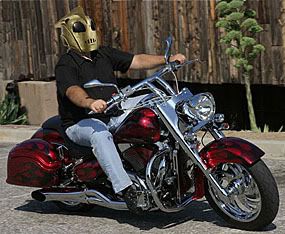At the risk of flogging a dead horse, I have worked out the strength of that tongue by my interpretation of the Australian trailer rules.
Please note that I say my interpretation - I have made some simplifications in order to avoid needing expensive analysis tools that I don't own, so this is not stand-up-in-a-court-of-law type of stuff.
http://www.teardrops.us/userfiles/53/to ... n-tool.pdf
There are two steps to this:
- Firstly, the tongue itself is sufficient by the Aussie rules for a gross weight of 1,240lb. That limit is fixed by the horizontal strength of the tongue. Personally I would be quite happy to accept a gross weight fixed by just the vertical strength of the tongue, which is 1,560lb. These are both reasonably close to the trailer's GVWR of 2,425lb (is that the right trailer?), bearing in mind the severe nature of the Aussie rules.
- Secondly, I have estimated the strength of the cross-member that has actually failed. A problem here is that it's not possible to simply define the end conditions of this cross-member, so I have done the two extremes. The optimistic one suggests the cross-member will fail with a load on the coupler of 208lb (8% of GVWR) and the pessimistic one says 104lb (4%). Either of these must be completely unacceptable under US towing practice - they can't even take the recommended static hitch load for this GVWR. Under the Aussie rules, this trailer would be rated for a maximum gross weight of 208-417lb - about what the trailer weighs empty!
So I think there's a clear case for saying this product is defective on the issue of the structural support for the tongue (not the tongue itself). I'm quite happy for a professional engineer to prove that my numbers are out by 25%, but they need to be out by 3-500% for this trailer to be acceptable.
Sorry if this sounds so bad, Robert, but I thought you might want an argument that you or anyone else could take to Northern Tool, or Carry-On.
Andrew

 and when its road ready take it to a welding shop and have a thicker angle welded to the frame and then jack up the bent angle and weld the two together.
and when its road ready take it to a welding shop and have a thicker angle welded to the frame and then jack up the bent angle and weld the two together.

 Doug
Doug

 and the angle went stright the front angle did flex a bit when i push down on the coupler so i will weld a 1/4"x2x2 angle to the backside of the angle.
and the angle went stright the front angle did flex a bit when i push down on the coupler so i will weld a 1/4"x2x2 angle to the backside of the angle.






